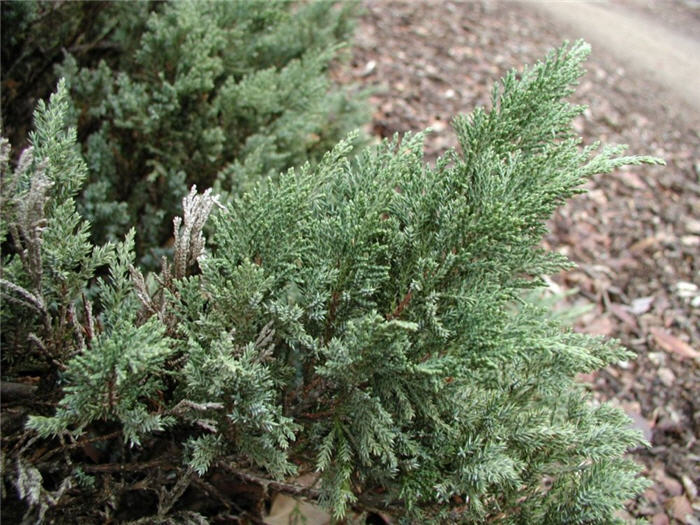| Botanical Name: Juniperus sabina 'Tamariscifolia | |
| Common Name: Tamarix Juniper |

-
Anatomy
-
Culture
-
Design
Plant Type
Conifer, Shrub, Ground cover
Height Range
1-3'
Flower Color
n/a
Flower Season
n/a
Leaf Color
Blue Green
Bark Color
Grey
Fruit Color
Black, Blue
Fruit Season
Fall
Sun
Full
Water
Low
Growth Rate
Moderate
Soil Type
Sandy, Clay, Loam, Rocky, Unparticular
Soil Condition
Average, Rich, Poor, Well-drained, Dry
Soil pH
Neutral, Basic
Adverse Factors
Allergenic
Design Styles
Formal, Mediterranean, Ranch, Spanish
Accenting Features
n/a
Seasonal Interest
Winter
Location Uses
Background, Shrub Border, Foundation
Special Uses
Erosion Control, Mass Planting
Attracts Wildlife
Birds, Wildlife
Information by: Stephanie Duer
Photographer: Normans/Sortomme
Photographer: Normans/Sortomme
-
Description
-
Notes
It's not its fault, but this juniper may be why the whole collection of plants are so disliked and misunderstood in the landscape. Despite its diminutive appearance in the nursery, this evergreen grows to about 2 to 3 feet tall, but will spread 10 to 15 feet across, so it is forever being hacked back to fit in spaces much too small. All that hacking doesn't help its looks, as it gets woody and dense, losing its lovely layered, symmetrical appearance. Use it as a large-scale groundcover, where it has plenty of room, and you will rethink junipers.
Grow in any soil that is well draining, including sandy, gravelly, or clay soils, but they must be well draining. Best growth in full sun. Once established, it tolerates dry soils and heat. Avoid shearing, as that will made the juniper woody and stiff; instead, prune selectively if necessary (see Guides).